
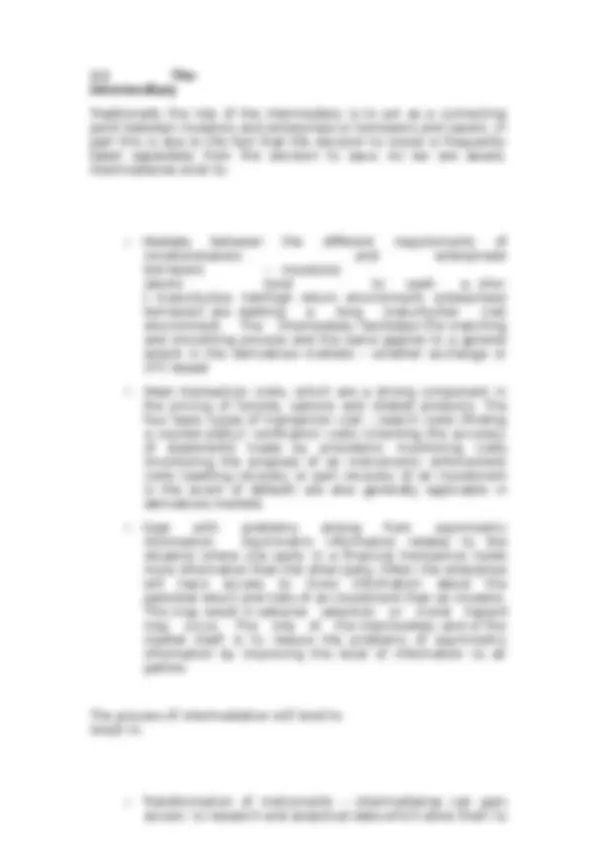
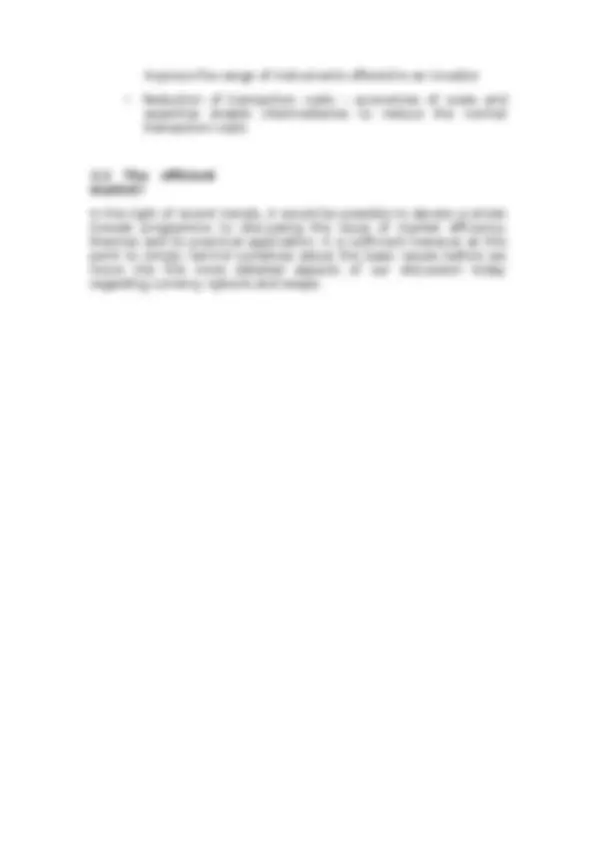
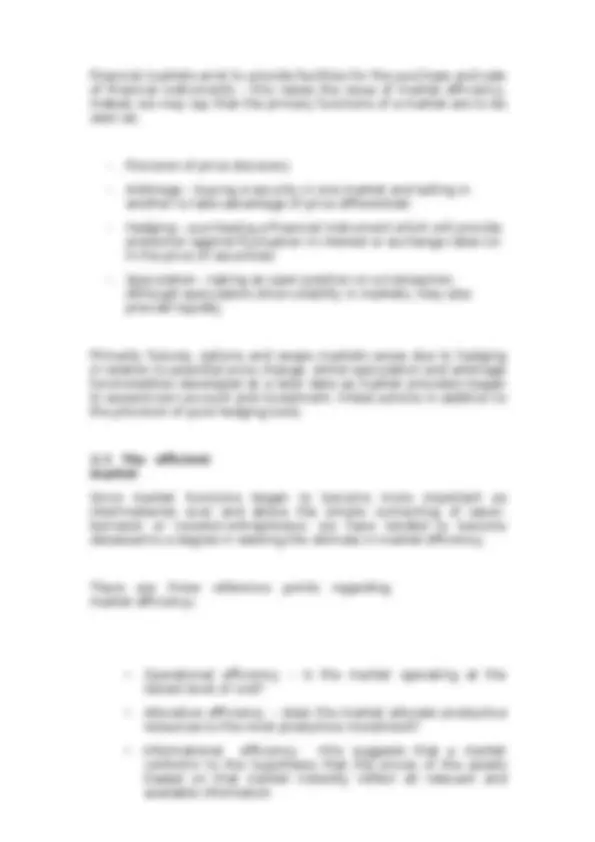
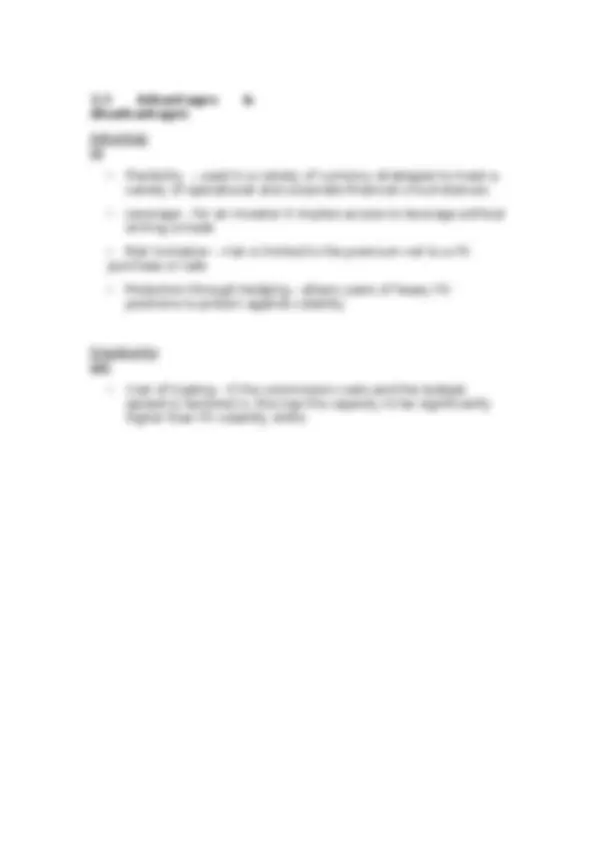
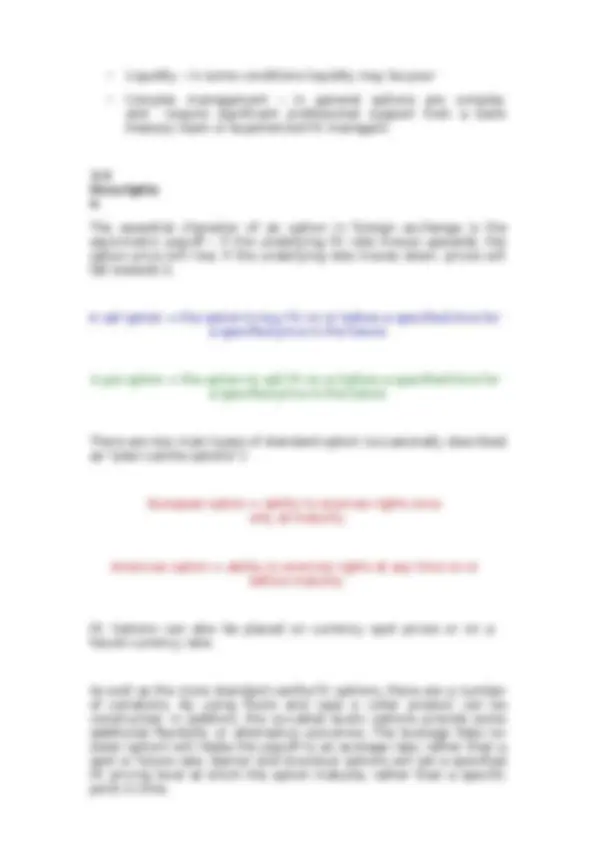
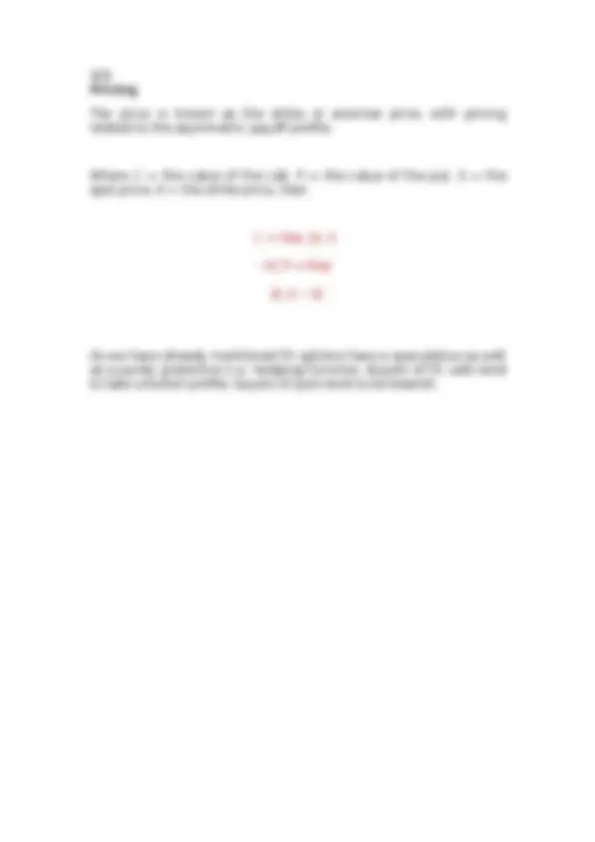
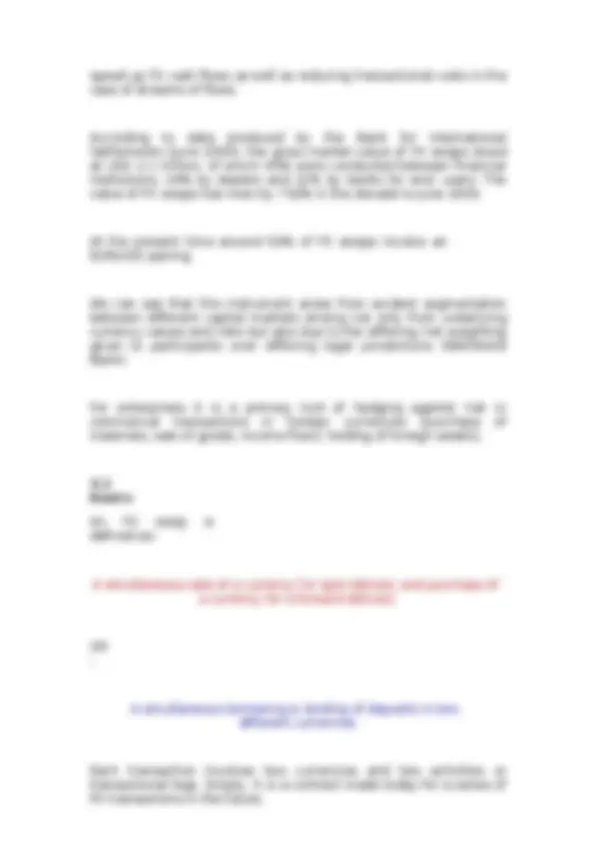
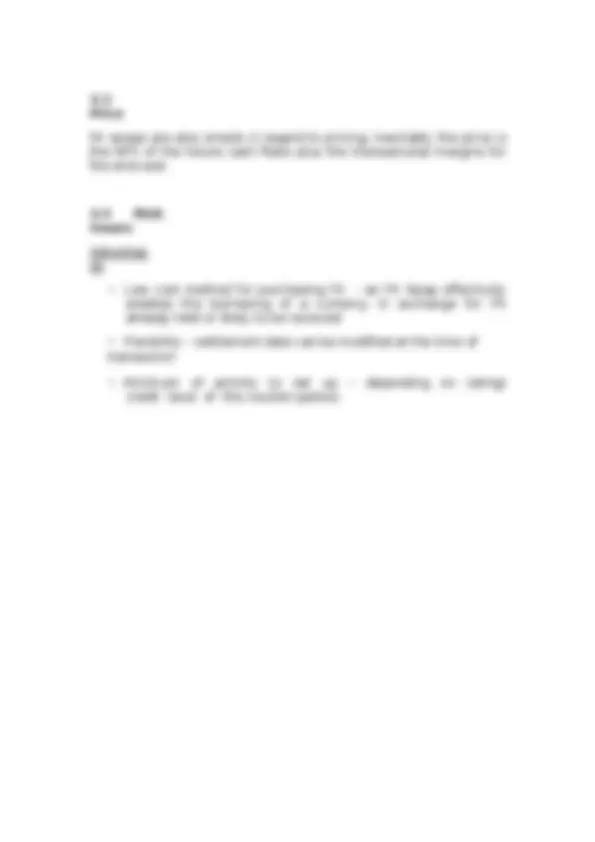
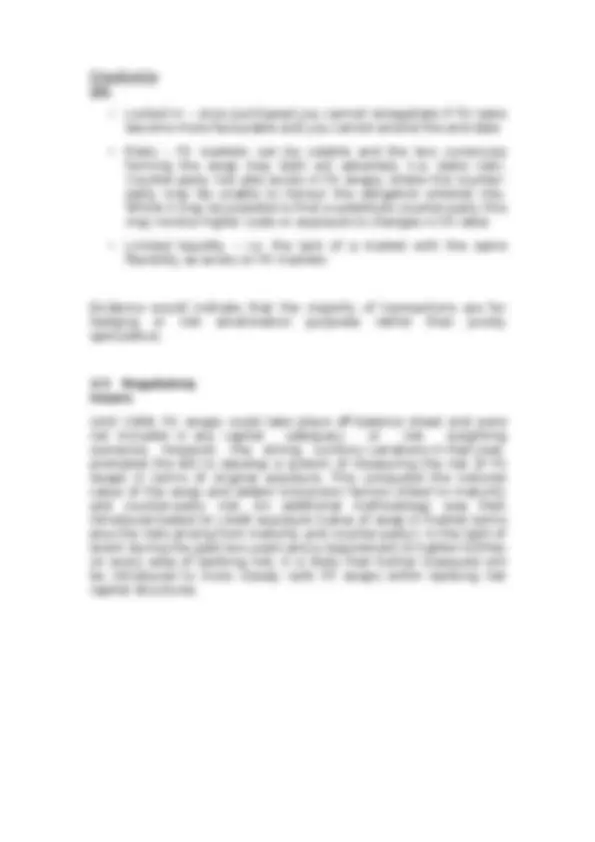


Study with the several resources on Docsity

Earn points by helping other students or get them with a premium plan


Prepare for your exams
Study with the several resources on Docsity

Earn points to download
Earn points by helping other students or get them with a premium plan
Community
Ask the community for help and clear up your study doubts
Discover the best universities in your country according to Docsity users
Free resources
Download our free guides on studying techniques, anxiety management strategies, and thesis advice from Docsity tutors
The role of currency options and swaps in international banking and capital markets. It discusses their relevance as instruments for international commerce and trade, the transaction costs involved, and their development. The document also covers the advantages and disadvantages of using these financial instruments, their description, and risk issues. Additionally, it touches upon regulatory issues and the history of fx swaps.
Typology: Study Guides, Projects, Research
1 / 15

This page cannot be seen from the preview
Don't miss anything!










This week, in the second lecture of the programme, we are examining the role of currency options and swaps as necessary components of international banking activity and reviewing their relevance as instruments in international capital markets.
A 2009 survey published by ISDA looked at derivatives usage by the world’s major companies in 2008 ‐2009. The use of derivatives by the world’s 500 largest companies, a broad‐ranging sample covering industries that included banking, mining, manufacturing, aerospace, wholesalers of office and electronic equipment, and retail, used derivative instruments to manage and hedge their business and financial risks had grown from 92% in 2003 to 94% in
The largest number of companies (94%) reported using foreign exchange derivatives, followed by interest rate derivatives (88%), commodity derivatives (51%), equity derivatives (30%), and credit derivatives (21%).
Companies in all industries reported the use of derivatives to manage risk, with the highest usage in financial services (98%) and the lowest in the services sector (84%).
FX derivatives are most heavily used in the financial sector; 100% of banks reported using FX derivatives, 89% of insurers and 86% of other financial services companies.
Although the use of derivatives is common to companies worldwide, the survey results suggest that there are regional differences. All the reporting companies based in the Netherlands, Canada, Switzerland, Great Britain, France, and Japan use derivatives. Among the rest of the ten countries with the largest number of companies in the Fortune Global 500, 97% of German companies, and 92% of US‐ based companies report using derivatives. Within the ten largest user countries, derivatives use is lowest between South Korean (87% ) and Chinese (62%) companies.
Before we commence, it may be useful to remind ourselves of some of the issues relating to the role of the intermediary and the overall concept of the market.
improve the range of instruments offered to an investor
2.2 The efficient market?
In the light of recent trends, it would be possible to devote a whole 6 ‐week programme to discussing the issue of market efficiency theories and its practical application. It is sufficient however at this point to simply remind ourselves about the basic issues before we move into the more detailed aspects of our discussion today regarding currency options and swaps.
Financial markets exist to provide facilities for the purchase and sale of financial instruments – this raises the issue of market efficiency. Indeed, we may say that the primary functions of a market are to be seen as:
Primarily futures, options and swaps markets arose due to hedging in relation to potential price change, whilst speculation and arbitrage functionalities developed at a later date as market providers began to expand own account and investment‐ linked actions in addition to the provision of pure hedging tools.
2.3 The efficient market
Since market functions began to become more important as intermediaries over and above the simple connecting of saver‐ borrower or investor‐entrepreneur, we have tended to become obsessed to a degree in seeking the ultimate in market efficiency.
There are three reference points regarding market efficiency:
But, in effect, all this information is reflected in the price because it is available to everyone
In general, it would appear that skilled and knowledgeable investors subscribe to the weak form theory that there is informational inefficiency in financial markets on the basis that not all information is available and that there are assets that are not affected by market equilibrium. Can we see this as being the case in the markets for derivatives, for example?
3.1 Why are these instruments required?
FX options provide a form of security or hedging against exposure to FX risk inherent in situations where currencies float against each other rather than operating at fixed parity rates.
They also provide a form of derivative instrument for speculators as well as for those seeking simply to hedge risk. Whilst similar to equity options, they are more closely affected by intrinsic issues of regional and national risk.
3.2 Background of their development
Options in currency are a relatively recent instrument; they were initially traded on OTC markets operated by banks in the late 1970’s. Exchange traded instruments developed on Futures & Options Markets in the 1980’s, with the first market being the Philadelphia Stock Exchange in 1982. Most FX options are traded OTC, with only three main exchange traded markets – ISE, Philadelphia SE and CME. The largest OTC traders are probably Deutsche Bank and UBS, with over one third of the global market between them.
3.3 Advantages & disadvantages
Advantag es
Disadvanta ges
Pricing
The price is known as the strike or exercise price, with pricing related to the asymmetric payoff profile.
Where C = the value of the call, P = the value of the put, S = the spot price, K = the strike price, then
C = Max [0, S
[0, K – S]
As we have already mentioned FX options have a speculative as well as a purely protective (i.e. hedging) function. Buyers of FX calls tend to take a bullish profile; buyers of puts tend to be bearish.
Pricing not only takes account of the relationship between S and K, but is also affected by the time value; this is the PV of the expected payout of an exercised option.
3.6 Volatility & Contesting Black‐ Scholes‐Merton?
Black‐Scholes enunciated a theory which when applied to options markets implied that volatility is a constant; the problem is that the market for FX options would tend to contract the Black‐Scholes model. Clearly we can estimate volatility from data – the historical approach, but in doing so we are introducing uncertainty with respect to the historical period to be surveyed – days, months, years or even whether we divide annual data by market trading days or 365?
At the same time if we move away from Black‐Scholes or from the historical approach and take an approach to FX option pricing based on implied volatility, this introduces an inherent conflict between model price and market price as well as giving no guidance about which constraint should be applied = e.g. put or call.
It is interestingthat in their paper on this topic, Haug & Tale b ( http://ssrn.com/abstract=1012075)^ suggested^ that^ options traders using the pricing formula the formula popularly called "Black‐ Scholes‐Merton” were in effect fudging data to fit the theory. Haug & Taleb derived historical evidence suggesting that:
compatible with the previous versions of the formula of Louis Bachelier and Edward O. Thorp (allowing a broad choice of probability distributions) and removed the risk parameter by using put‐call parity
speed up FX cash flows as well as reducing transactional costs in the case of streams of flows.
According to data produced by the Bank for International Settlements (June 2009), the gross market value of FX swaps stood at USD 2.1 trillion, of which 45% were conducted between financial institutions, 34% by dealers and 21% by banks for end‐ users. The value of FX swaps has risen by 732% in the decade to June 2009.
At the present time around 50% of FX swaps involve an EUR/USD pairing.
We can see that this instrument arose from evident segmentation between different capital markets arising not only from underlying currency values and risks but also due to the differing risk weighting given to participants over differing legal jurisdictions (IBM/World Bank).
For enterprises it is a primary tool of hedging against risk in commercial transactions in foreign currencies (purchase of materials, sale of goods, income flows, holding of foreign assets).
Basics
An FX swap is defined as:
A simultaneous sale of a currency for spot delivery and purchase of a currency for a forward delivery
A simultaneous borrowing & lending of deposits in two different currencies
Each transaction involves two currencies and two activities or transactional legs. Simply, it is a contract made today for a series of FX transactions in the future.
Price
FX swaps are also simple in regard to pricing; inevitably the price is the NPV of the future cash flows plus the transactional margins for the end‐user.
4.4 Risk issues
Advantag es